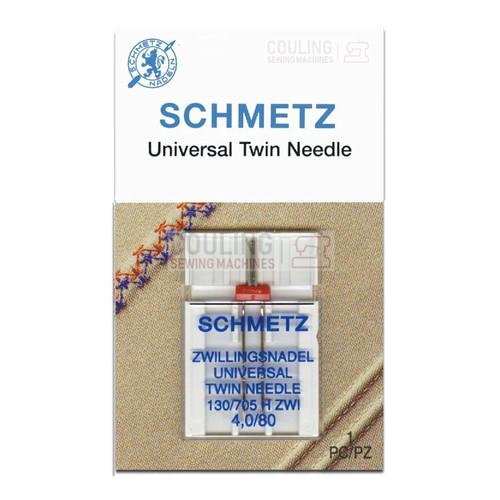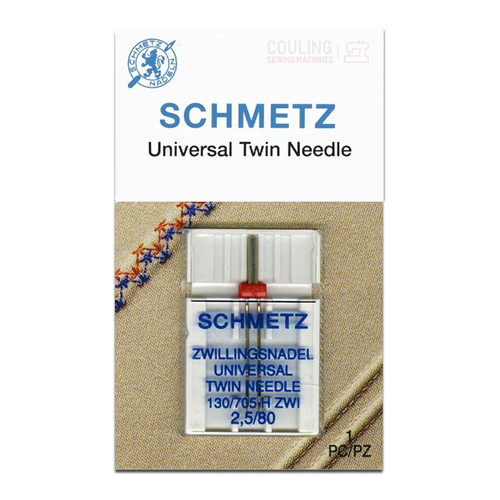With the Universal Triple Needle, you can create professional looking seams – even without using a coverlock machine: Using your normal household sewing machine, you can sew three parallel, stretchy seams at the same time using three top threads on the top of the seam.
The Universal Triple Needle is also suitable for decorative stitching. Create beautiful effects with simple utility stitches, such as zigzag or blind stitches, and more complex effects with decorative stitches. Thanks to the slightly rounded points, the Universal Triple Needle can be used with a wide array of fabric without any problems.
Before sewing
The Universal Triple Needle can be used on conventional household sewing machines that have a zigzag function. Like other household needles, it is also inserted into the needle bar: From your perspective, the flat side of the shank points away from you. The needle plate and sewing foot must have a recess large enough for the selected needle distance.
Tip: Switch on twin mode or use a similar button on your sewing machine (if available) to limit the stitch width. This prevents the needle from accidentally hitting the needle plate and breaking.
Threading the needle
- A separate reel of thread is required for each of the three needles. If you do not have three thread holders, use one bobbin each for the second and third threads and place them onto the reel holder under the reel of thread containing the first thread.
- Make sure that the bobbins and reel of thread are unwound in the same direction.
- You can use the same color thread for all three needles or different colors for decorative effects.
- Guide the three threads through your machine's guide elements together as if they were one thread. Then separate the threads and guide one thread through each eye. Some machines have special thread separating tools. In this case, please follow your machine’s special threading instructions.
Please note:
The automatic needle threader does not work with twin or triple needles!
More Tips
- Check the thread tension in advance with a few test stitches. You could use leftover fabric for this. Adjust the thread tension so that the bottom thread runs has a slight zigzag shape along the seam. This ensures that the seam can stretch.
- In thicker areas of material, reduce the sewing speed slightly to prevent needle breakage.
- Do not push or pull the fabric when sewing. This can lead to an uneven stitch length and, in the worst case, to needle breakage.
- To achieve a nice, smooth seam, you can use spray starch before sewing or use a water-soluble stabilizer while sewing.
- Try a blindstitch seam or other decorative seams. Push the twin button on your sewing machine (if present) to limit the stitch width so that the needle does not hit the throat plate by mistake and break.








